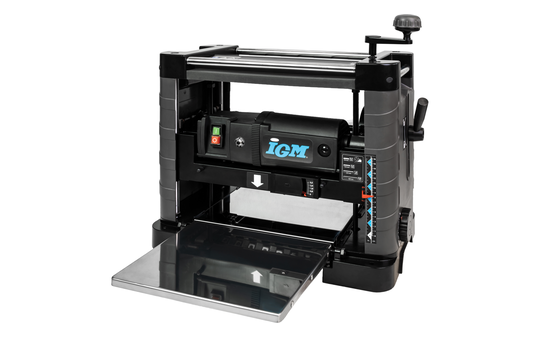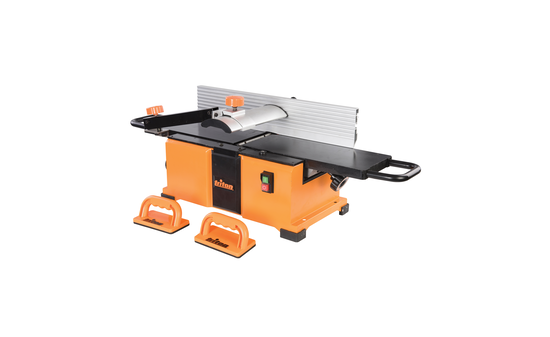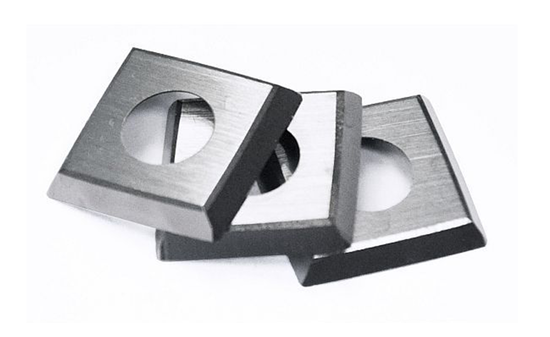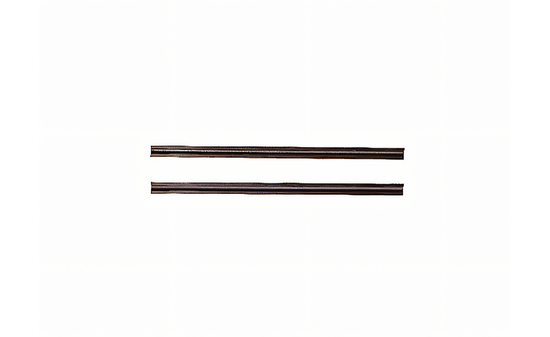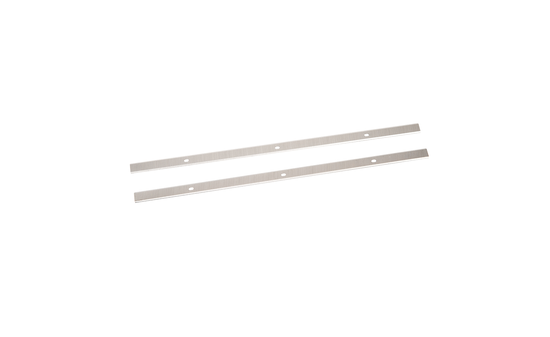Fast and efficient planing of the rough sawn timber.
The jointer
After the first cut of the raw wood, the processing on the jointer follows. First, one face of the workpiece is planed. This is particularly important for warped or skewed planks and boards: high and low spots must be levelled. Then the workpiece is passed over the jointer a second time, with the previously planed surface placed against the fence. In this way, you get two flat surfaces standing exactly at right angles to each other (or one surface and one edge). They serve as the basis for the following machining steps.
The thickness planer
The dressed workpiece is then further processed in the thickness planer. In the process, the second surface, which was previously still saw-rough, is planed flat and smooth parallel to the first surface. If the passage height of the machine is greater than the width of the workpieces, it is also possible to plane the second edge parallel to the first by passing the workpieces through the machine on edge.
The alternative
If you are reluctant to buy two machines for reasons of space or cost, you can also dress your workpieces with the router and plane them to thickness. To do this, you only need a router sled to guide the router. The sauter SlabMatrix is ideally suited, not least because it also allows the workpiece to be routed to format.
What is the difference between a jointer and a thickness planer?
With a planer, a flat surface is planed on a piece of raw wood. Usually, an edge that is exactly perpendicular to the plane is also planed.
The planer is used to plane a flat surface on a piece of raw wood.
With the thickness planer, another surface is planed on the workpiece that was planed in the first step, exactly parallel to the first surface. If the workpiece is not too wide, it can then be set on edge and sent through the thickness planer to also obtain two edges that are exactly parallel to each other.
Do you need both machines?
The function of both machines can also be performed by hand planers or by the hand router in conjunction with a face router. However, they cannot replace each other alternately: With the thickness planer you cannot plane wood (without makeshift measures), and with the jointer you cannot plane parallel surfaces and edges to a workpiece. Normally, therefore, you need both machines to process raw wood first with the jointer and then with the thickness planer.


